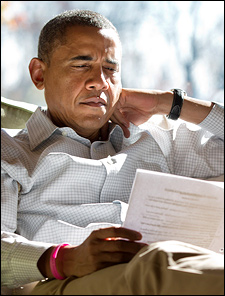The National Republican Congressional Committee has released the names of their second round of Patriot Program members, those congressmen who the NRCC believes are its most vulnerable incumbents. Back in April, the Committee publicized the first group of 11 GOP members facing the most competitive political situations.
Yesterday, nine more Representatives became “Patriots.” The program is designed to recruit incumbents in safe political situations to help raise and/or contribute funds to the designated colleagues.
The nine new members are:
• Dan Benishek – MI-1
• Michael Grimm – NY-11
• Bill Johnson – OH-6
• Tom Latham – IA-3
• Gary Miller – CA-31
• Tom Reed – NY-23
• Scott Rigell – VA-2
• Keith Rothfus – PA-12
• Lee Terry – NE-2
Two are rather obvious choices who did not make the first cut when the original Patriots were tabbed three months ago. Rep. Benishek won a second term last November, but with just 48 percent of the vote, outlasting by one point the same opponent he topped in double digits just two years before. Rep. Miller holds the most Democratic seat, at least in terms of the 2012 presidential vote, of any Republican House member.
Rep. Grimm represents the Staten Island seat that generally votes Republican, but did elect a Democrat for a term in the original Obama presidential year of 2008. Announced Democratic candidate Domenic Recchia, a New York City councilman, has already raised more money than Grimm, hence the sophomore congressman being added as a Patriot Program participant.
Representatives Johnson, Rigell, and Terry all hold marginally swing districts. In the majority of political circumstances they, as Republican incumbents, should maintain their seats.
Rep. Reed scored only a 49-46 percent win last November in a district that is more Democratic than his original pre-redistricting 29th CD. Even with the change, the three-point victory was an under-performance.
Rep. Rothfus upset Democratic incumbent Mark Critz in 2012, taking advantage of a favorable Republican redistricting map. The fact that Critz is considering seeking a re-match lands Rothfus in the Patriot Program.
Rep. Latham won a huge victory (52-43 percent) over fellow Congressman Leonard Boswell (D) last November in an incumbent pairing situation, but the district is still very attainable for the Democrats who plan to make the seat a target. It’s unlikely they’ll succeed, but the NRCC action signals that their party will take no chances here.


